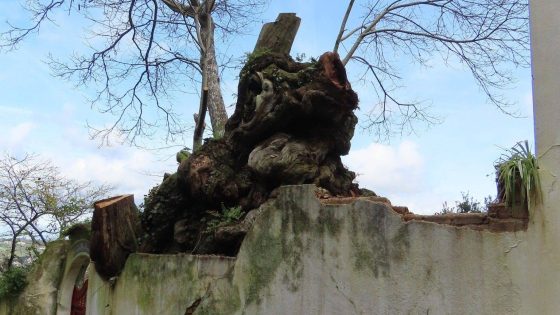A centuries-old chestnut tree in Sintra, Portugal, is at the center of a legal dispute after it was cut down without proper authorization. This incident has raised concerns about the protection of public interest trees, especially those with historical significance. As of February 20, 2025, the Instituto de Conservação da Natureza e Florestas (ICNF) has confirmed they did not authorize any intervention on this tree.
- Ancient chestnut tree in Sintra classified.
- ICNF did not authorize tree intervention.
- GAAS reported unauthorized tree cutting.
- Inspectors proposed tree's declassification.
- Significant fines for damaging public trees.
- Chestnut tree considered a national monument.
Why is the Protection of Historic Trees Important in Portugal?
Have you ever wondered why protecting historic trees matters? The recent incident involving the chestnut tree in Sintra highlights the need for strict regulations. Trees like this one are not just plants; they are living monuments that tell the story of our environment and history.
What Happened to the Chestnut Tree in Sintra?
The chestnut tree, over 600 years old, was classified as a tree of public interest in 1945. Recently, it was reported that the tree had been severely damaged, leading to complaints from local environmental groups. The ICNF has stated that they were not aware of any authorization for this intervention.
Key Facts About the Chestnut Tree Incident
This incident raises several important points about tree conservation:
- The tree is a significant ecological asset, providing habitat and historical value.
- Unauthorized interventions can lead to fines ranging from €25,000 to €500,000.
- The ICNF is the only authority that can authorize work on public interest trees.
- Environmental groups are advocating for stricter enforcement of tree protection laws.
Legal Implications of Cutting Public Interest Trees
Cutting down or damaging public interest trees without permission can have serious legal repercussions. According to Portuguese law, such actions are strictly prohibited, and violators may face hefty fines. This serves as a reminder of the importance of respecting nature and following regulations.
The Ecological Importance of Historic Trees
Historic trees like the chestnut in Sintra play a vital role in our ecosystem. They support biodiversity, contribute to air quality, and enhance the beauty of our landscapes. Protecting these trees is not just about preserving history; it’s about maintaining the health of our environment for future generations.
In conclusion, the situation surrounding the chestnut tree in Sintra serves as a critical reminder of the need for robust protections for our natural heritage. It is essential for communities to engage in conservation efforts and ensure that our historic trees are preserved for years to come.
































